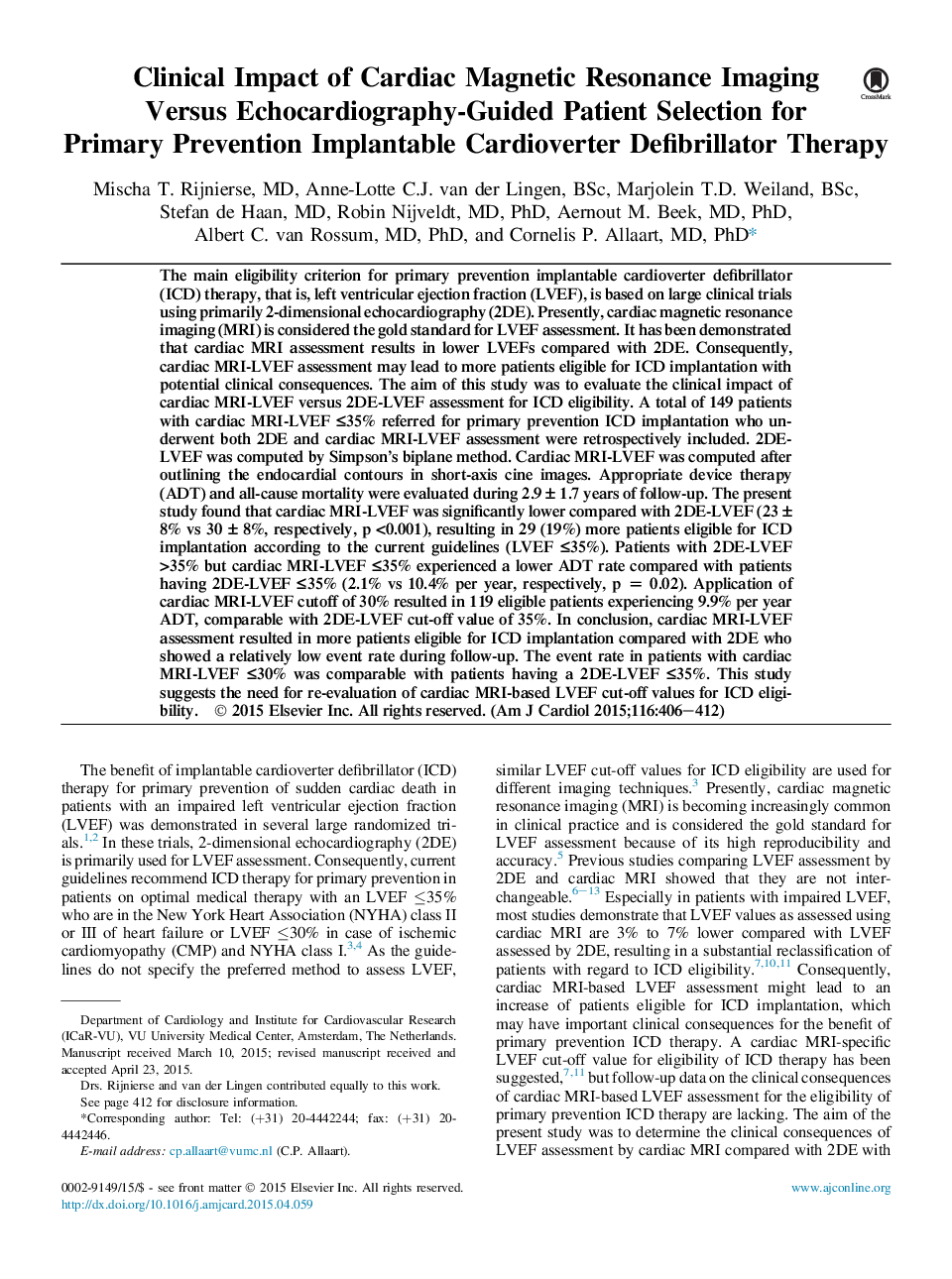| کد مقاله | کد نشریه | سال انتشار | مقاله انگلیسی | نسخه تمام متن |
|---|---|---|---|---|
| 2853551 | 1572133 | 2015 | 7 صفحه PDF | دانلود رایگان |
The main eligibility criterion for primary prevention implantable cardioverter defibrillator (ICD) therapy, that is, left ventricular ejection fraction (LVEF), is based on large clinical trials using primarily 2-dimensional echocardiography (2DE). Presently, cardiac magnetic resonance imaging (MRI) is considered the gold standard for LVEF assessment. It has been demonstrated that cardiac MRI assessment results in lower LVEFs compared with 2DE. Consequently, cardiac MRI-LVEF assessment may lead to more patients eligible for ICD implantation with potential clinical consequences. The aim of this study was to evaluate the clinical impact of cardiac MRI-LVEF versus 2DE-LVEF assessment for ICD eligibility. A total of 149 patients with cardiac MRI-LVEF ≤35% referred for primary prevention ICD implantation who underwent both 2DE and cardiac MRI-LVEF assessment were retrospectively included. 2DE-LVEF was computed by Simpson's biplane method. Cardiac MRI-LVEF was computed after outlining the endocardial contours in short-axis cine images. Appropriate device therapy (ADT) and all-cause mortality were evaluated during 2.9 ± 1.7 years of follow-up. The present study found that cardiac MRI-LVEF was significantly lower compared with 2DE-LVEF (23 ± 8% vs 30 ± 8%, respectively, p <0.001), resulting in 29 (19%) more patients eligible for ICD implantation according to the current guidelines (LVEF ≤35%). Patients with 2DE-LVEF >35% but cardiac MRI-LVEF ≤35% experienced a lower ADT rate compared with patients having 2DE-LVEF ≤35% (2.1% vs 10.4% per year, respectively, p = 0.02). Application of cardiac MRI-LVEF cutoff of 30% resulted in 119 eligible patients experiencing 9.9% per year ADT, comparable with 2DE-LVEF cut-off value of 35%. In conclusion, cardiac MRI-LVEF assessment resulted in more patients eligible for ICD implantation compared with 2DE who showed a relatively low event rate during follow-up. The event rate in patients with cardiac MRI-LVEF ≤30% was comparable with patients having a 2DE-LVEF ≤35%. This study suggests the need for re-evaluation of cardiac MRI-based LVEF cut-off values for ICD eligibility.
Journal: The American Journal of Cardiology - Volume 116, Issue 3, 1 August 2015, Pages 406–412
